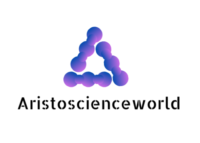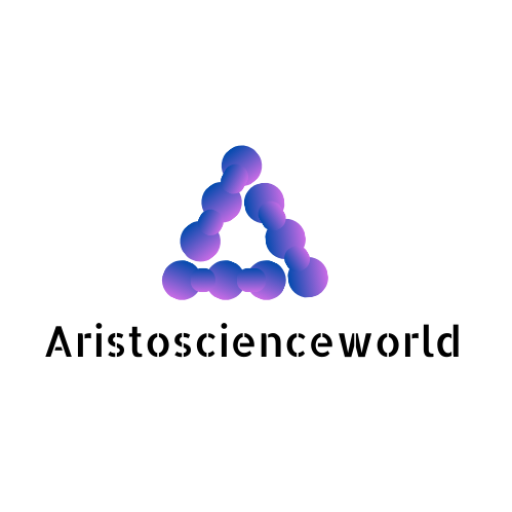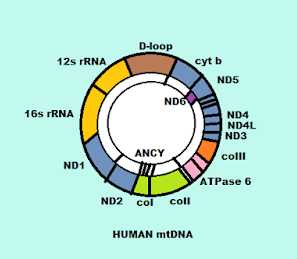All we know is that Mitochondria is a powerhouse of the cell because of their energy production – ATPs. Tricarboxylic acid cycle (TCA), known for its energy production using acetyl-CoA (3C compound). This cycle plays a significant role in metabolism and biosynthesis, and it occurs in mitochondria. The other one is the electron transport chain (ETC) which happens in the inner membrane of the mitochondria and plays a predominant role in cellular respiration, ATP production and photosynthesis in plants coupled with oxidative phosphorylation. Especially, Mitochondria has their own unique DNA. Let’s get into the topic.
Mitochondrial DNA:
Mitochondrial DNA is circular in shape, unlike nuclear DNA, which has a linear structure. It resembles plasmid in bacteria or yeast cells. It has 16569 base pairs(bp) and codes for 37 genes. Nuclear DNA regulates mitochondrial DNA, it is not self-regulated, and it is tightly packed. We have seen mitochondrial DNA contains 37 coding genes where 13 genes are responsible for oxidative phosphorylation where it encodes:
1. Seven subunits of NADH dehydrogenase(cytochrome I)
2. cytochrome b of complex II
3. Three subunits of cytochrome oxidase(complex IV)
4. Two subunits of ATP synthase
5. 22 genes responsible for encoding the transfer RNA (tRNA) and
6. Two genes are responsible for encoding the two subunits of Ribosomal RNA (rRNA).
In structural aspects, mitochondrial DNA has two chains, one is a heavy chain, and another is a light chain. This is because mitochondria produce proteins on their own as respiration and energy production occur in the mitochondria. However, heavy chains produce DNA
polymerase and RNA polymerase, whereas light chains produce different types of RNA to make protein-like cytochrome oxidase.
Characteristics of Mitochondrial genome:
1. Mitochondrial DNA has Non-Mendelian inheritance, which means offspring will not have half of the maternal and paternal DNA. It only has maternal inheritance.
2. Nuclear DNA regulates mitochondrial DNA replication by producing signals.
3. It is heteroplasmy. It is defined as mitochondrial variation between two different organisms from the same species.
4. The mtDNA has its synthesizing machinery to produce protein. As we know, mitochondria have several essential pathways, and they have their protein for regulation.
5. It has a unique genetic code over nuclear DNA. This nuclear DNA has a stop codon of UAA, UGA, UAG, while mitochondria have AGA, AGG, not UGA. It codes for tryptophan in mitochondria, and AGA, AGG encodes arginine in nuclear DNA. AUA codes for isoleucine in nuclear DNA whereas methionine in mtDNA.
6. The mutation rate is very high in mitochondria because it has no introns, no histone for protection and no effective repair mechanisms by enzymes, and more importantly, during replication, nuclear DNA has a robust proofreading mechanism while mtDNA doesn’t have.
7. In oxidative phosphorylation, It will produce oxygen free radicals (such as superoxide radicals). This is also a reason for the high rate of mutation in mtDNA.
How Eukaryotes obtained mitochondria from prokaryotes:
In 1996 Lynn Margulis, a biologist who discovered the Endosymbiotic relationship. She noticed that the mitochondrial characteristics were similar to bacteria. For example, mitochondria have small circular DNA identical to bacterial DNA. So a long-ago eukaryotic cell engulfed the bacterial cell instead of digesting it; the bacteria survived! And it was in a symbiotic relationship that turns the bacteria into mitochondria. And she proposed an Endosymbiotic theory.
All we know is that both parents give birth, and the child will have the characteristics of their parents (dominant traits). But here, it is different, as we have our last name from our father, and here in this aspect, the only maternal mtDNA passed through their offspring is interesting. During fertilization, egg(n) and sperm(n) fuse together and form a zygote(2n). The egg gives the nuclear DNA, and cellular organelles and sperm cell body give the nuclear DNA forms the zygote, and through fertilization, it undergoes several steps to form a zygote. The collar region of the sperms have the mitochondria, In the course of fertilization, the motility of sperms needs higher energy and this is provided by the collar of the sperm cells, which is full of mitochondria—only the body part of the sperm cells involved in zygote formation. Hence, mitochondria are passed by maternal mtDNA. The following illustration gives the details about maternal inheritance.
This maternal inheritance has the advantage of analyzing genetic lineages. We can identify a female lineage. Also, we can test the biological sibling because the siblings have similar mtDNA from the mother. The pedigree of one generation to another will show the maternal inheritance of mtDNA. For example, if mothers acquire blue eyes, it passes through their children whereas fathers’ character won’t. This illustration provides the maternal inheritance of mtDNA.
Discover more from Aristoscienceworld
Subscribe to get the latest posts sent to your email.




